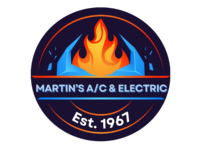Your home’s electrical system works behind the scenes every day. It powers your lights, appliances, and keeps your family comfortable and connected. But over time, the parts that make up this system can wear down, especially in older homes. Knowing when things are no longer working the way they should can help you catch problems early, before they become dangerous or expensive.
In Cut Off, many homes have wiring and panels that were installed decades ago. And while they might still be working, that doesn’t mean they’re up to today’s safety standards or able to handle the demand of modern electronics and AC systems. If you’re starting to notice odd electrical behavior, it could be time to take a closer look.
Signs Your Electrical System Is Outdated
Some warning signs are easy to overlook or brush off, especially when everything still seems to work. But consistent small problems often point to a larger issue underneath. Any of the following signals can be a clue that your system may be outdated and need professional attention:
– Frequent circuit breaker trips: If you’re resetting breakers often, your system may be struggling to carry the load.
– Lights that flicker or dim unexpectedly: Especially when you plug in appliances or turn multiple devices on.
– A burning or ozone-like smell: This may happen after turning on outlets or devices and should never be ignored.
– Outlets that are warm to the touch or discolored: These are signs of overheating and potential wiring issues.
– Heavy use of extension cords or power strips: If there aren’t enough outlets for your needs, your current system may no longer be sufficient.
One example: a homeowner in Cut Off noticed flickering kitchen lights every time the microwave and toaster were used together. At first, it seemed minor. But it turned out the wiring couldn’t handle the power draw, and fixing it early helped avoid a full electrical panel replacement.
Dangers Of Neglecting An Outdated Electrical System
Ignoring signs of electrical wear doesn’t just risk inconvenience. In many cases, it can directly put your home and the people inside it at risk. Problems that go unchecked for too long can lead to:
– Fire hazards caused by overheating wires or overloaded circuits
– Shocks from exposed wiring or faulty outlets
– Higher energy usage when systems run inefficiently or leak current
– Compatibility issues with new appliances that require more power than your current setup can provide
Addressing small signs early doesn’t just offer peace of mind. It also means avoiding situations that can turn hazardous quickly. If your breakers struggle or your lights dim regularly, it’s worth getting things checked rather than assuming it’s normal wear and tear. Many issues that start out minor can snowball into larger problems if left alone too long. Taking action sooner can help protect your home and avoid the discomfort and cost that come with major repairs.
Steps To Inspect Your Electrical System
If you’re starting to suspect there’s a problem with your wiring or panel, a good first step is a visual inspection. While some damage is hidden behind walls or inside circuits, other signs show up where you can see them. Still, a full inspection should be done by trained professionals who know what to look for and how to handle it safely.
Here are a few key steps our professionals follow when inspecting electrical systems:
– Look at the electrical panel: Corroded breakers, rust, or burnt marks can mean parts are failing. Panels over 25 years old often need upgrades to stay safe and code-compliant.
– Examine outlets and switches: Cracking, loose-fitting plugs, or discoloration may point to deeper wiring issues. Test covers to see if they feel warm after use.
– Check the wiring: In attics, basements, or crawlspaces, exposed wires may be bent, brittle, or chewed by rodents. Cables that look frayed or dated should be replaced.
– Test with a multimeter: This helps check individual outlets for proper voltage levels, grounding, and short circuits.
– Identify mismatched wiring: New device installs like generators, EV chargers, or modern AC units sometimes require rewiring older circuits to match.
One homeowner in Cut Off thought the flickering lights in their laundry room were coming from a bad bulb. After a professional took a look, it turned out the circuit was overloaded, and the wiring insulation had started to crack. Fixing it early helped them avoid a complete outage or worse.
Benefits Of Upgrading Your Electrical System
Updating your electrical system comes with more than just avoiding problems. It can actually improve how your home runs day to day. Many homes in Cut Off are older and weren’t designed for the number of electronics used today. From smart TVs to charging stations and high-powered kitchen appliances, demand has grown.
Upgrading can offer:
– Better home safety: Modern circuit breakers and safer wiring reduce the risk of fire and shock.
– Fewer outages: A system that can handle your electrical load means fewer tripped breakers and flickering lights.
– Lower power usage: Outdated systems often waste electricity due to loose connections and poor grounding.
– Increase in resale value: If you ever sell your home, an updated panel and wiring will appeal to buyers looking for safety and reliability.
A freshly upgraded system also makes it easier to add things like backup power setups or solar components later. Planning ahead when making changes can give you more flexibility in the future.
Making Electrical Safety a Priority in Your Cut Off Home
Keeping a home safe isn’t just about what you see. It’s also about what’s hidden behind your walls and in your electrical panel. Many problems with outdated systems start slowly and grow over time, which is why regular checks and upgrades are important, especially in older properties. It’s easy to forget about your wiring until something feels off, but by then the risk may already be growing.
When electrical issues start to show up, even in small ways, it’s a signal to take action. A home in Cut Off that was wired several decades ago may not be able to keep up with today’s appliances, devices, and power needs. By taking the time to have your system checked, you’ll have more peace of mind and can avoid some of the larger problems that come with faulty wiring or outdated materials.
Working with electricians who understand the home layouts, building age, and electrical demands in Cut Off can go a long way toward making sure your electrical system is safe and strong for years to come. Early attention to smaller signs can often make the difference between a quick repair and a major replacement. Don’t sit on signs that point to a bigger issue. Getting a real inspection done sooner means better safety and efficiency throughout your home.
Maintaining your home’s safety starts with addressing electrical issues before they escalate into major hazards. When you notice signs like flickering lights or frequent breaker trips, it may be time for a professional inspection. Martin’s Heating & Air Conditioning understands how aging wiring and outdated systems can disrupt daily life. Consider scheduling a review with a qualified electrician in Cut Off to ensure your system is safe and up-to-date. For a quick estimate or to book a service visit, please contact us today.



